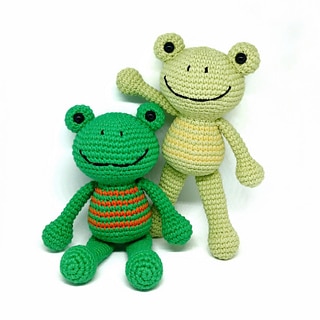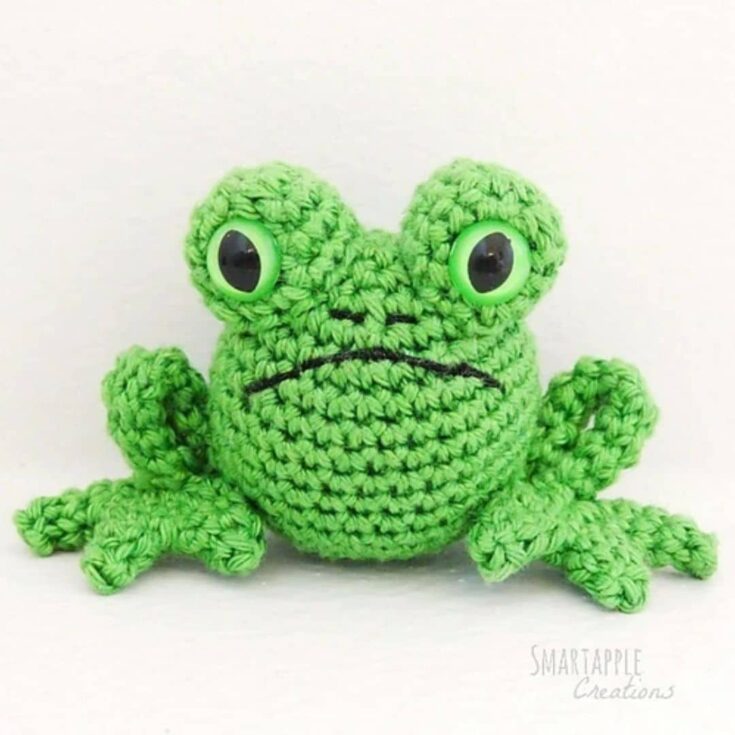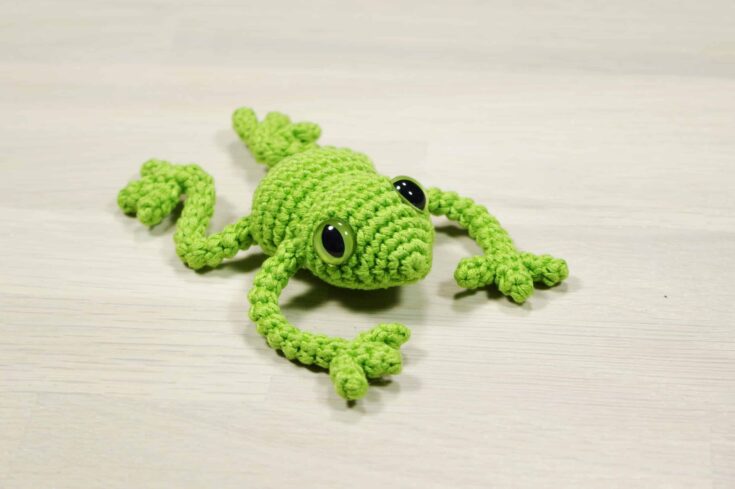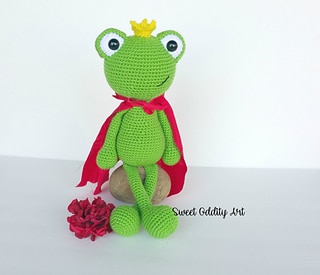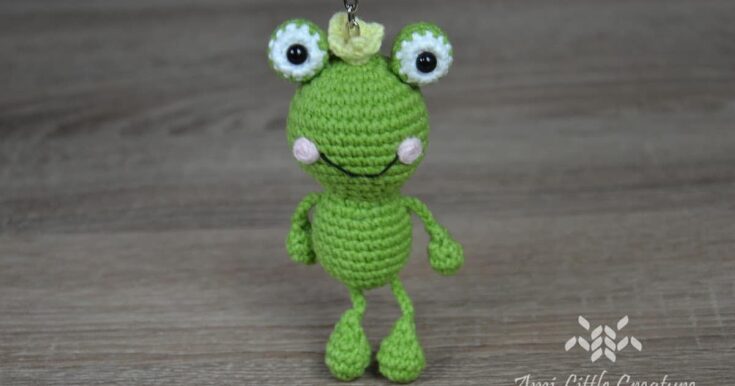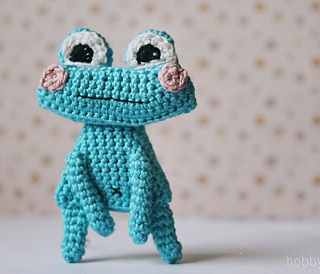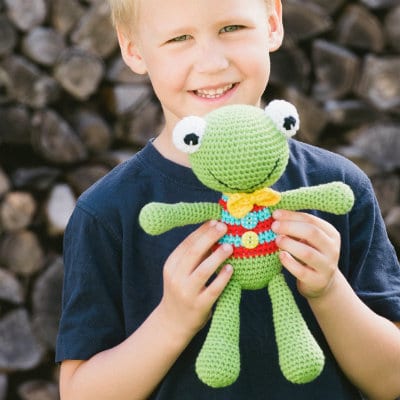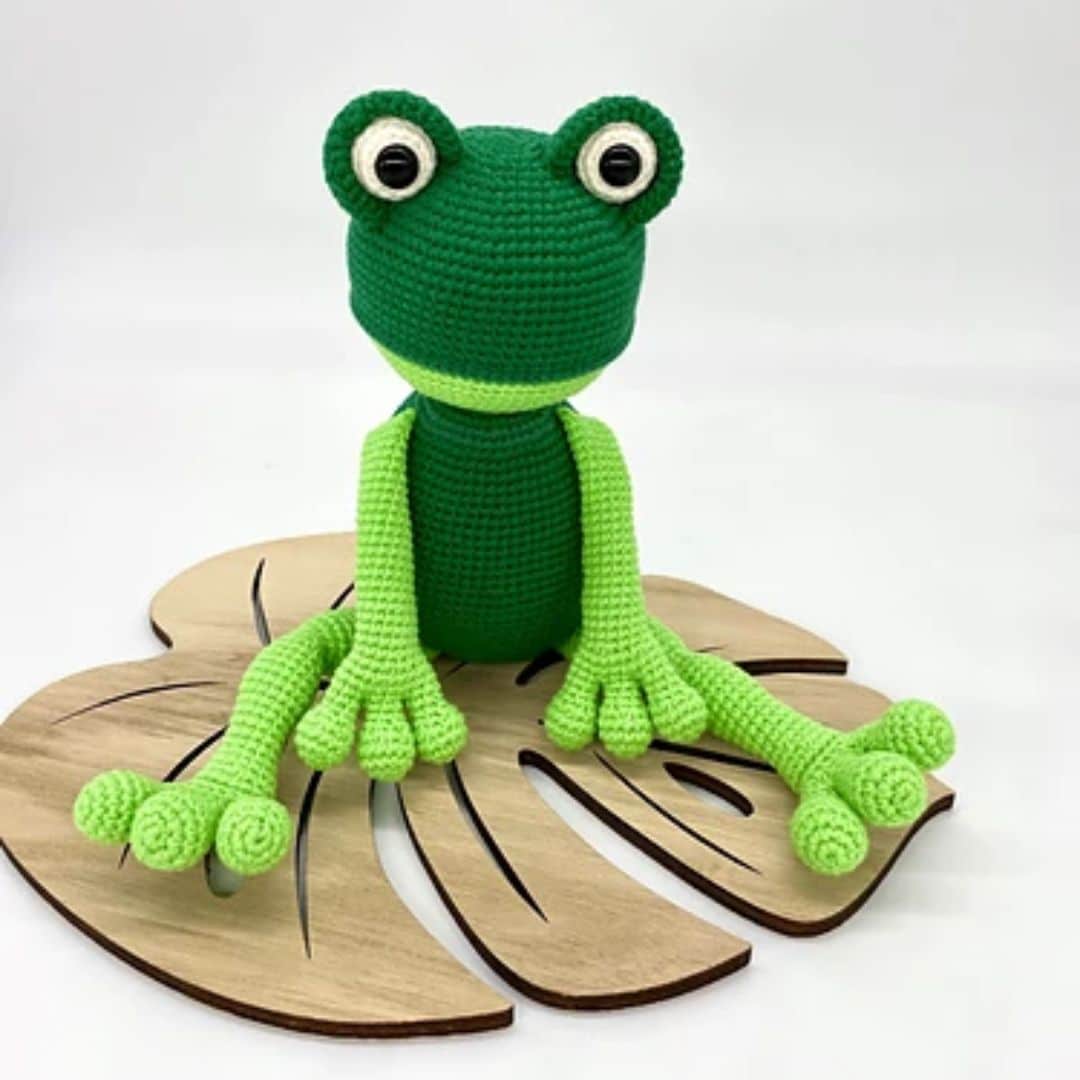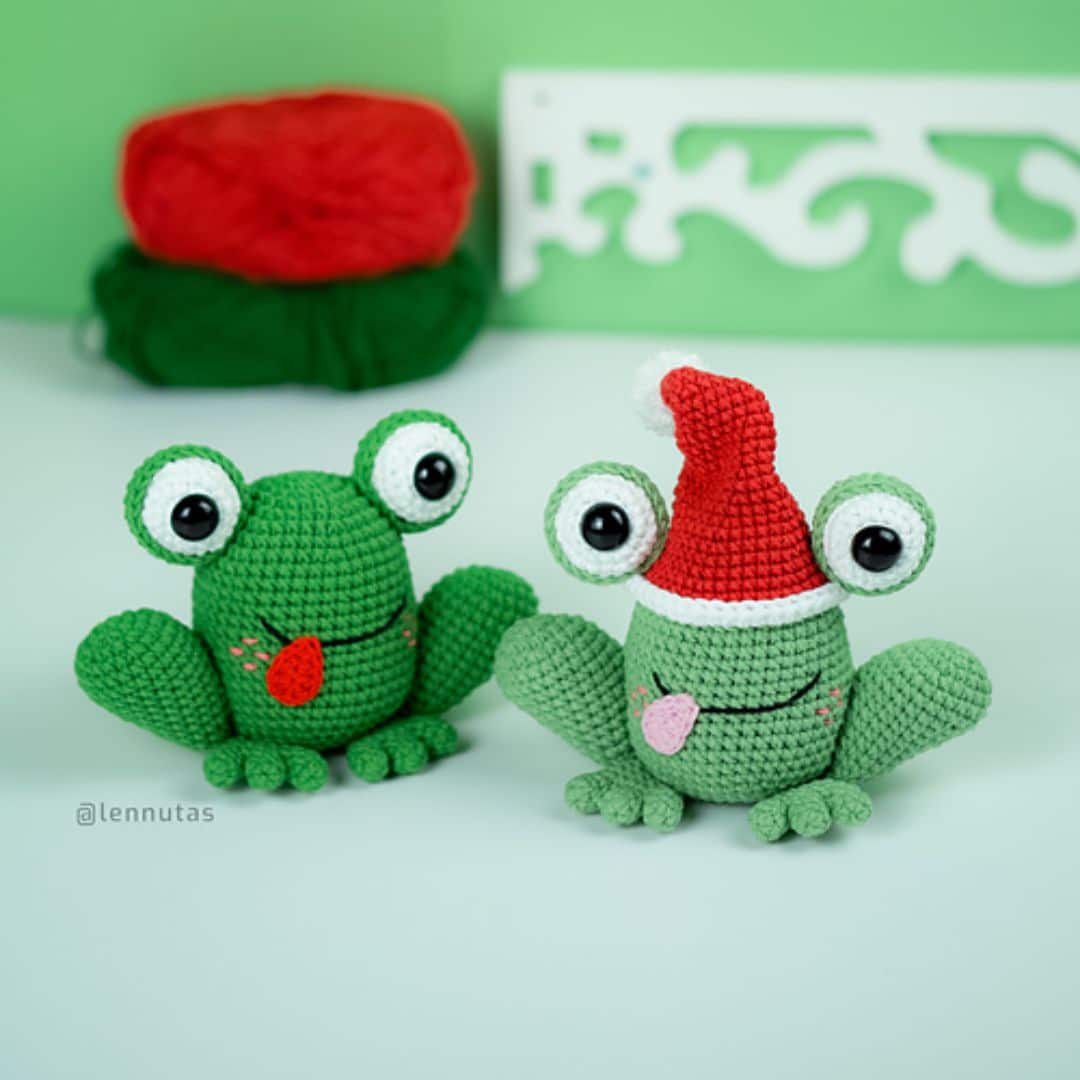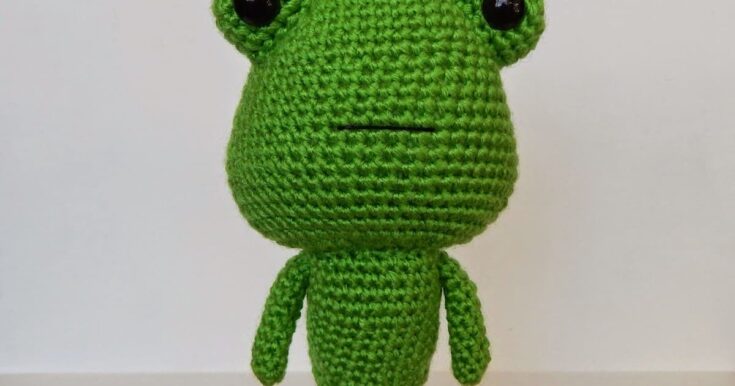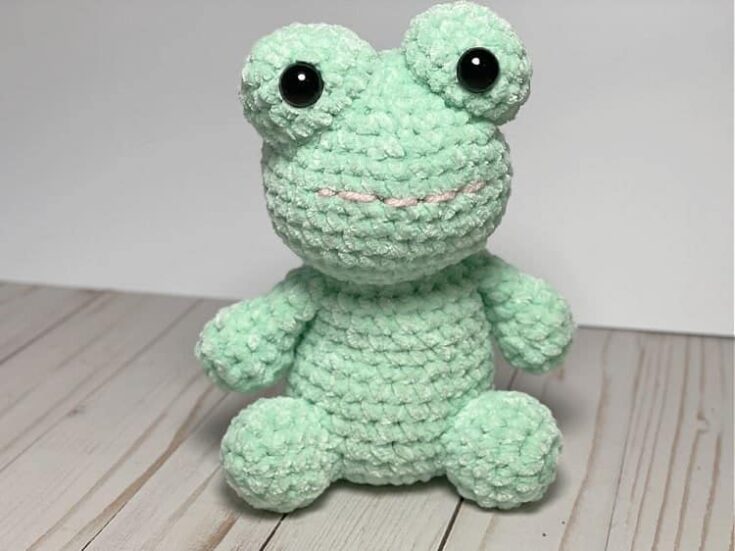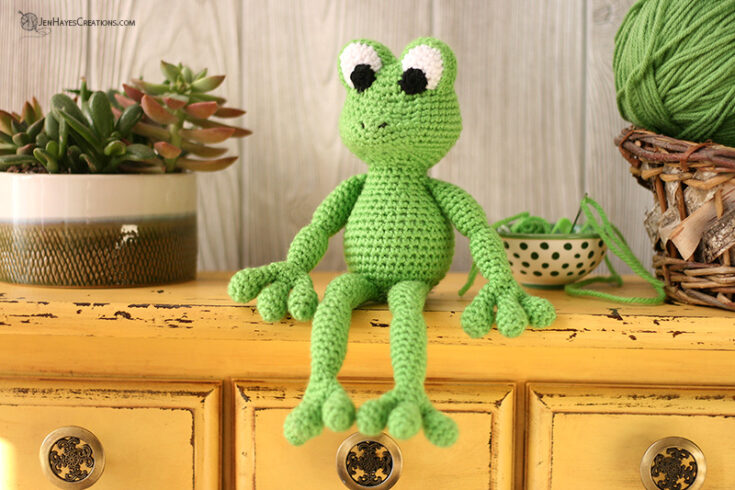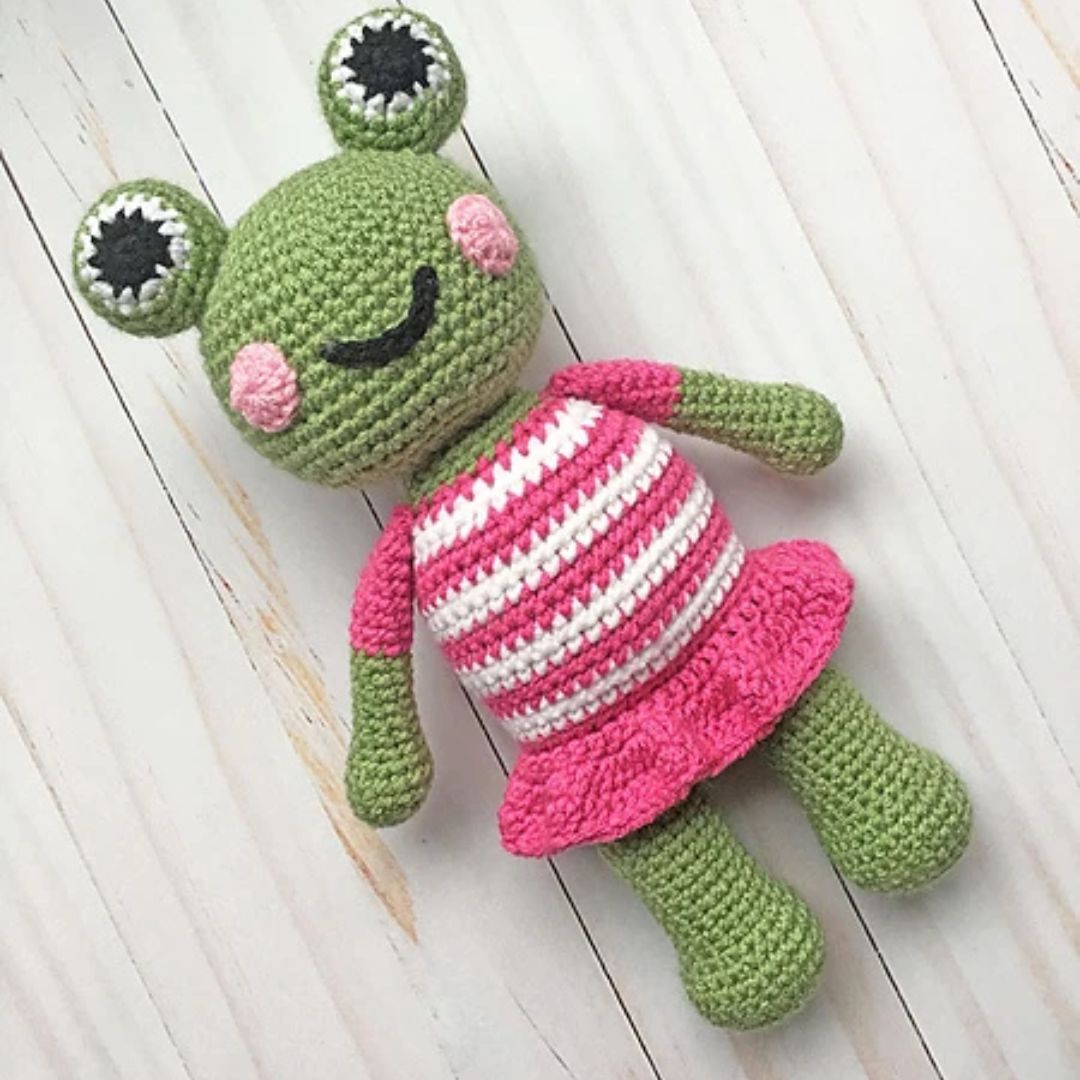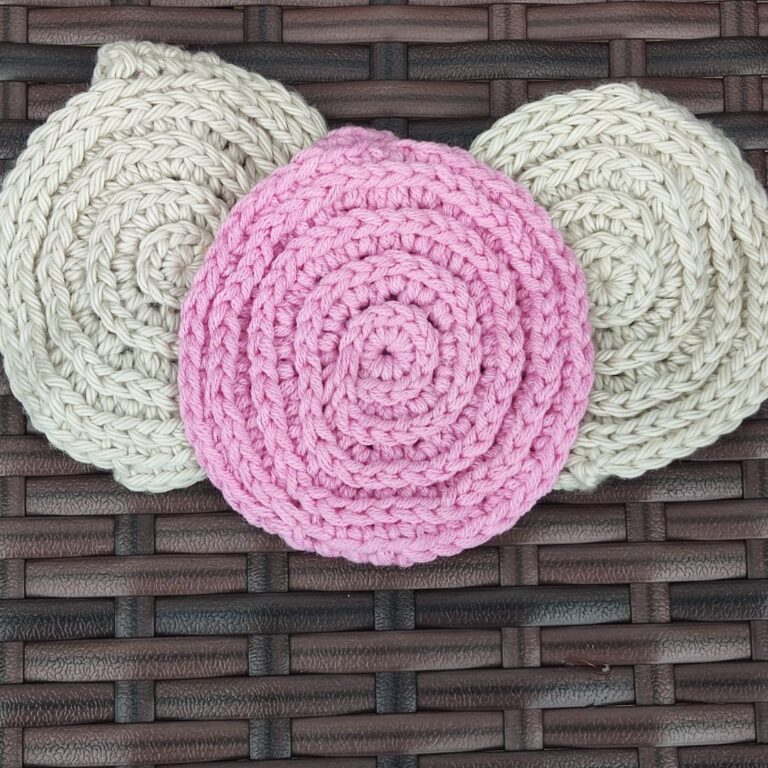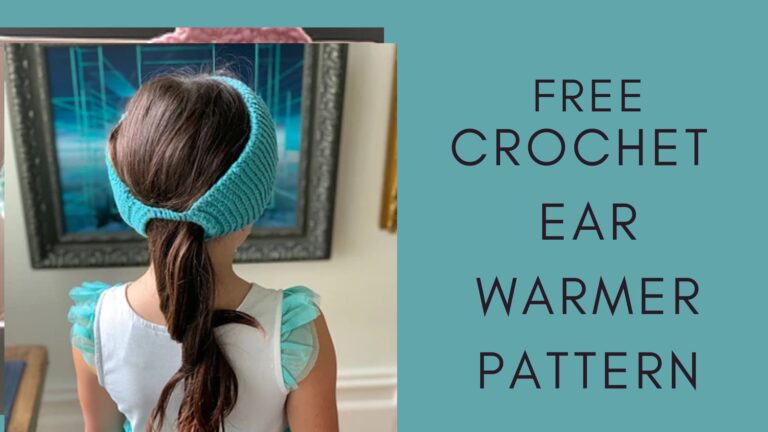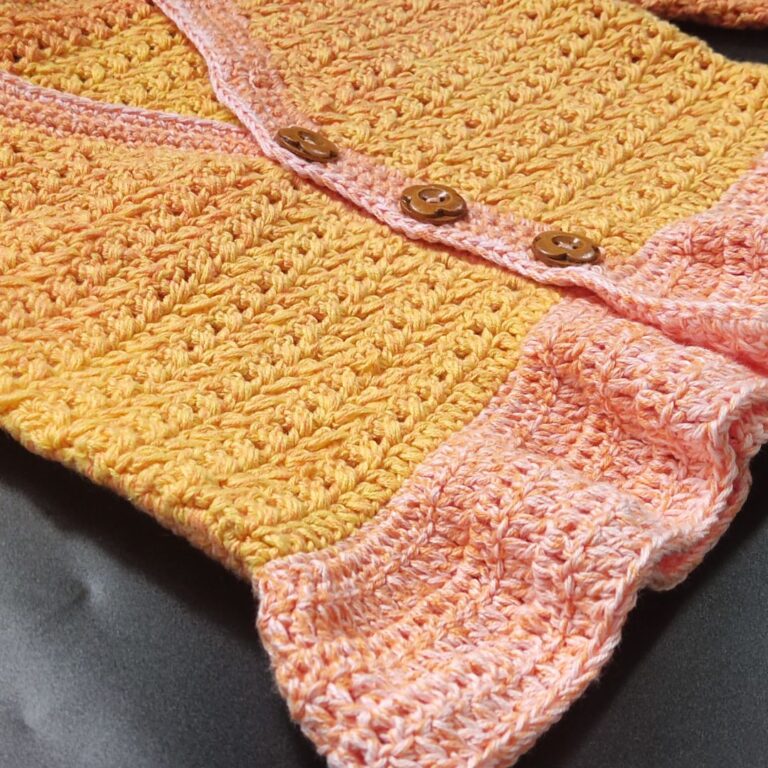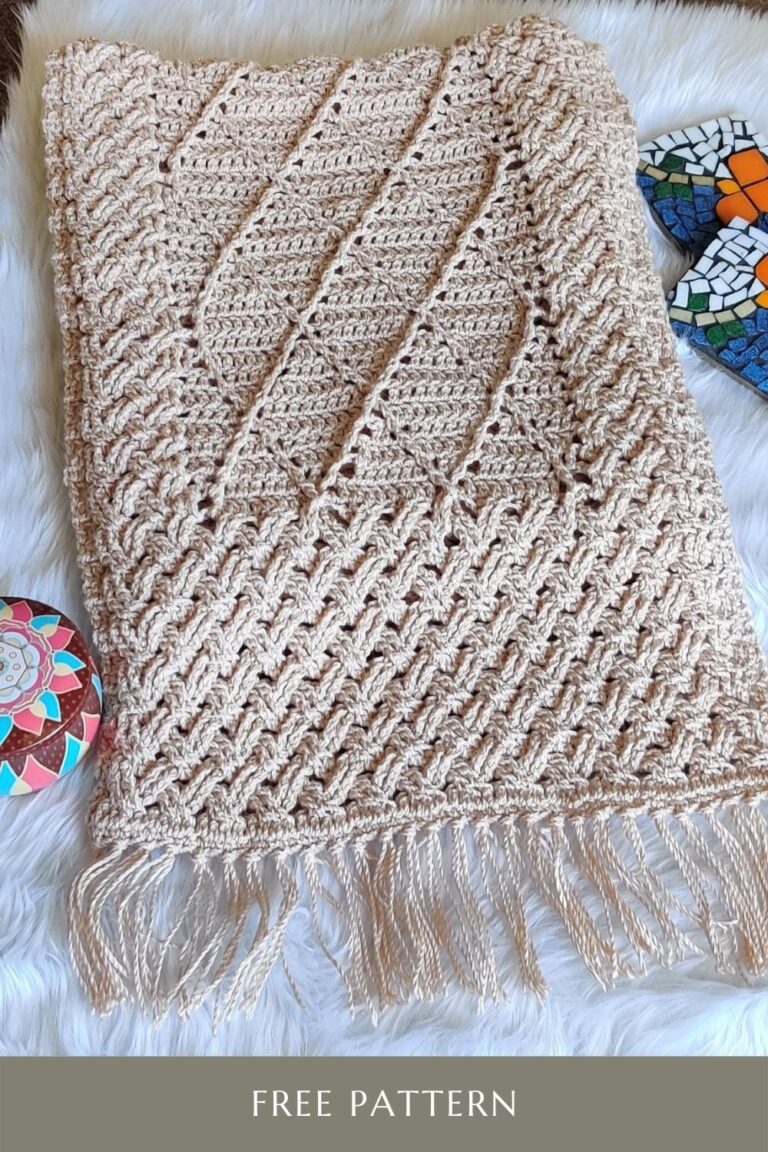Amazing Crochet Frog Patterns
It’s time for some creative crochet frog patterns! Embarking on an adventure through the enchanting world of crochet, there’s a delightful creature waiting to hop off your hook and into your heart – the humble frog.
I’ve curated a selection of the most adorable, fun, and easy-to-follow frog patterns. perfect for beginners ready to take that first exciting leap into the world of crochet creatures, these patterns will guide you stitch by stitch, creating not just a crochet frog, but a delightful experience brimming with creativity and joy.
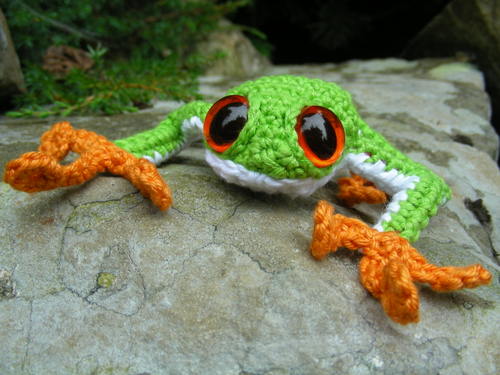
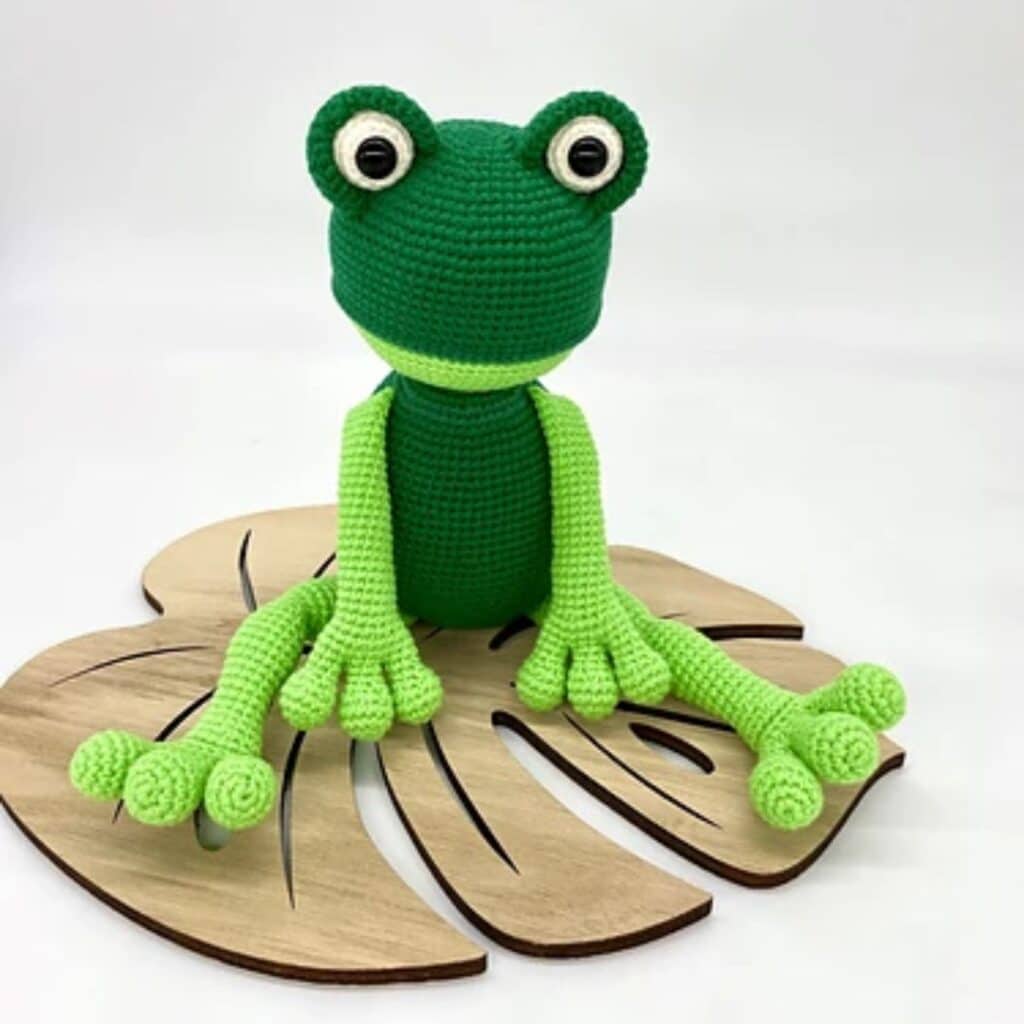
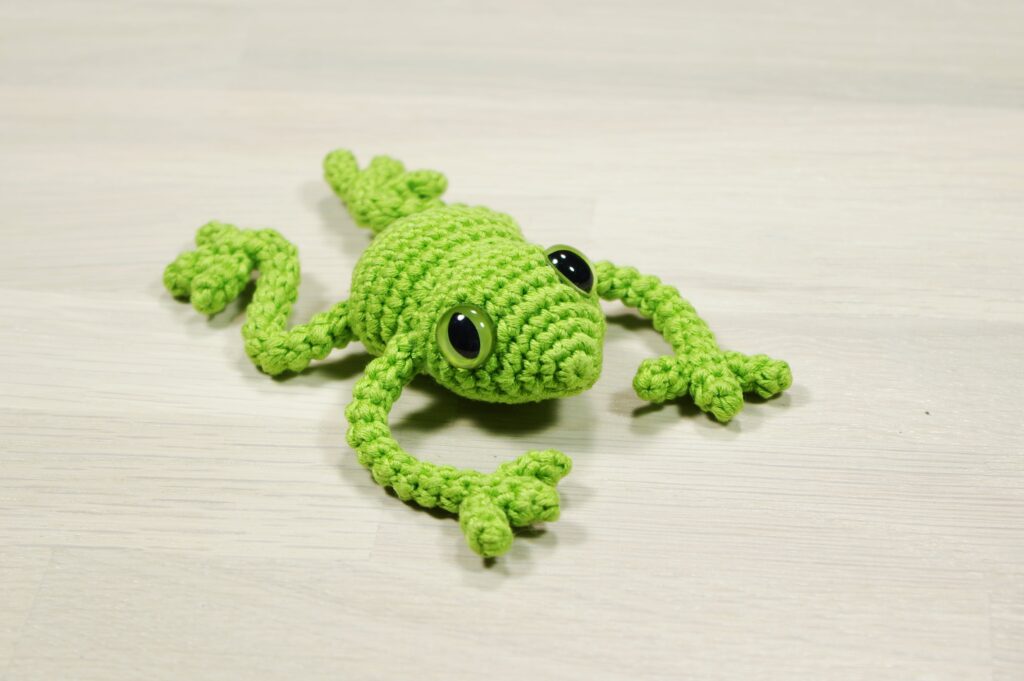
Basics of Crocheting a Frog
Crocheting a Frog is no different than crocheting other Amigurumi (stuffed Animals).
Get your materials – yarn, crochet hook, stuffing, safety eyes, and stitch markers ready. You also need to work on having and maintaining a tight stitch in order to prevent your stuffing from coming out easily.
It can never be overemphasized that you need to familiarise yourself with the specific crochet frog pattern you decide on making. This gives you the opportunity to understand the constructions and note any expert tips provided by the designer!
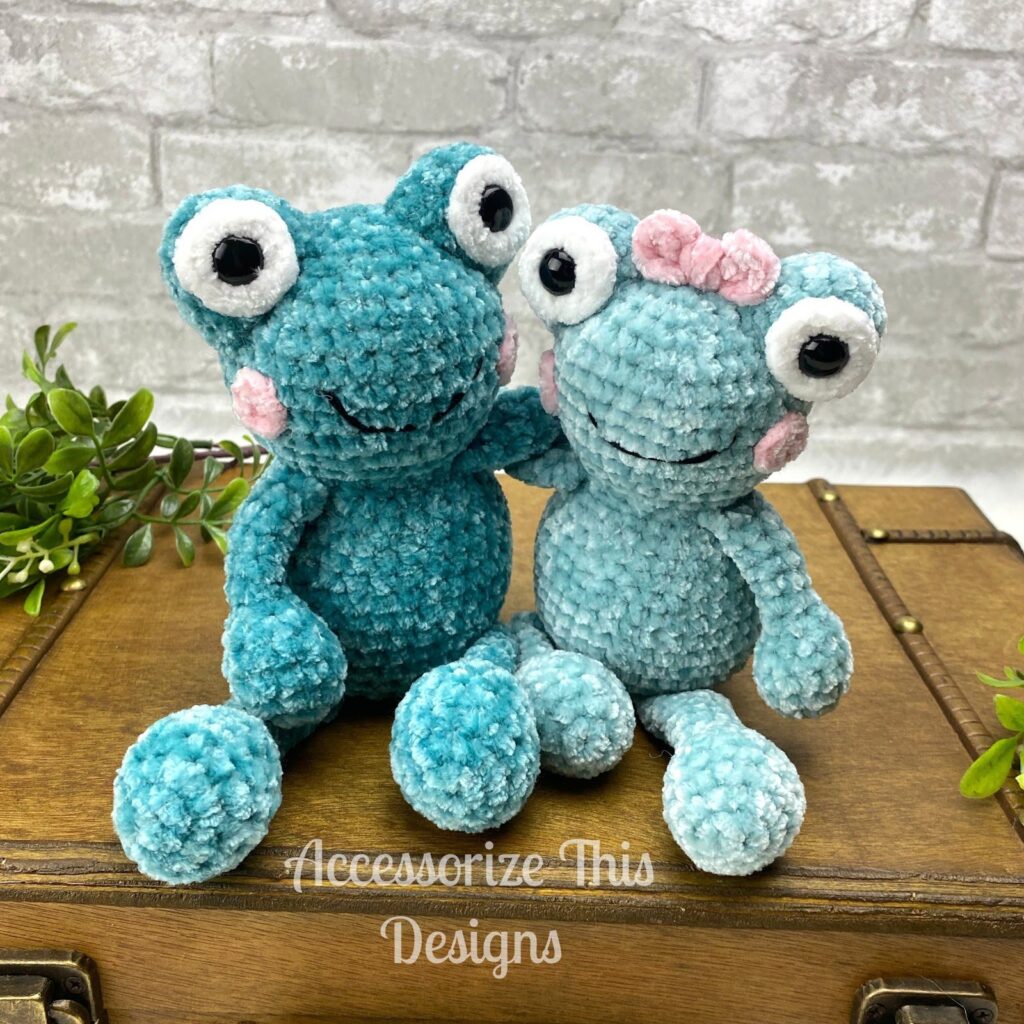
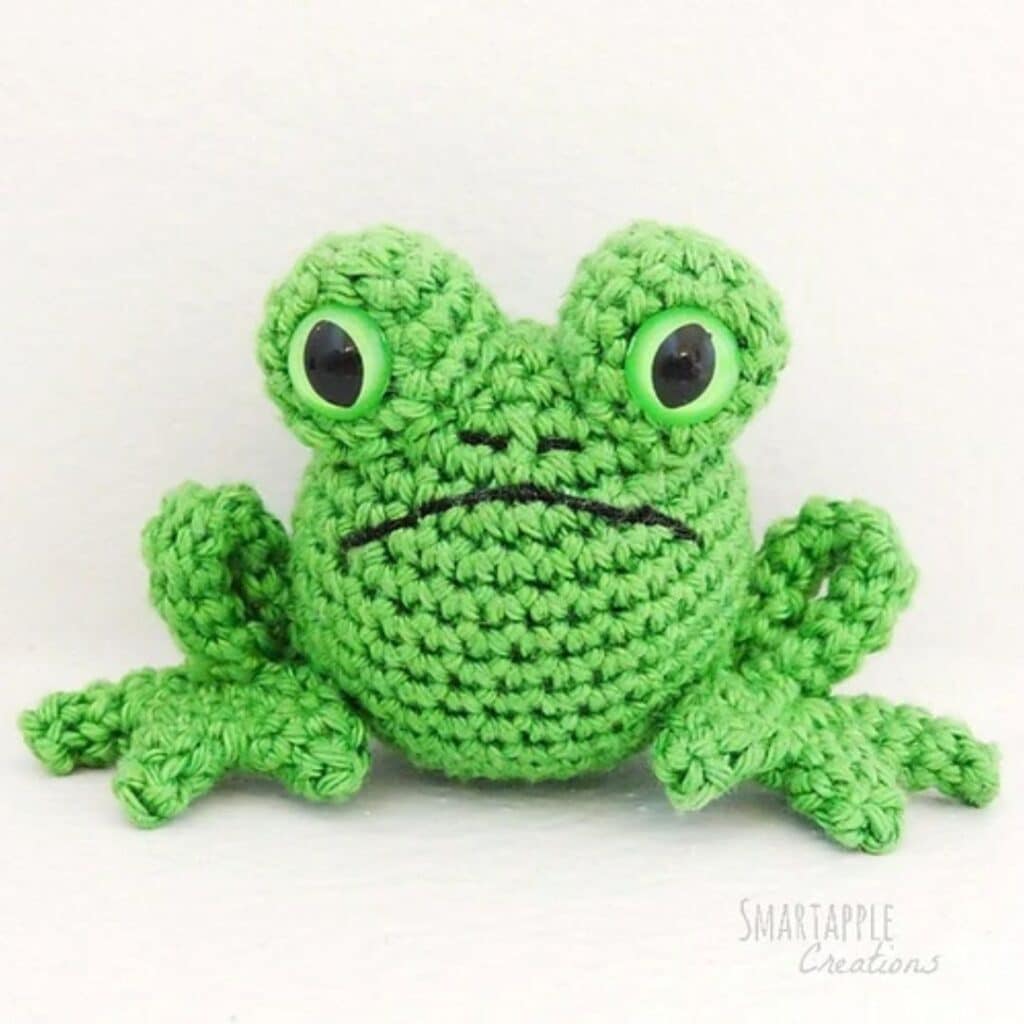
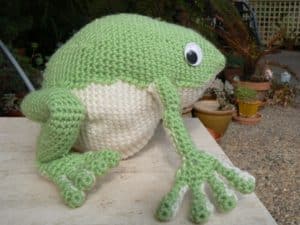
Can a beginner crochet amigurumi frogs?
Yes, a beginner can definitely crochet amigurumi frogs! While amigurumi might seem daunting because of the intricate details, many patterns are suitable for beginners and I have listed them below.
Here are a few tips for beginners who are interested in trying their hand at amigurumi:
1. Start with Simple Patterns: Look for beginner-friendly amigurumi frog patterns that use basic stitches and simple shapes. Patterns that use one color of yarn will also be easier to start with as you won’t have to worry about color changes.
2. Learn the Basic Stitches: The majority of the crochet frog pattern in this post uses the single crochet stitch, as well as techniques for increasing and decreasing stitches. Once you’ve mastered these, you’re well on your way.
3. Use the Right Tools: Make sure you have a good quality crochet hook that fits comfortably in your hand, a stitch marker to keep your place in the round, and a yarn needle for sewing pieces together.
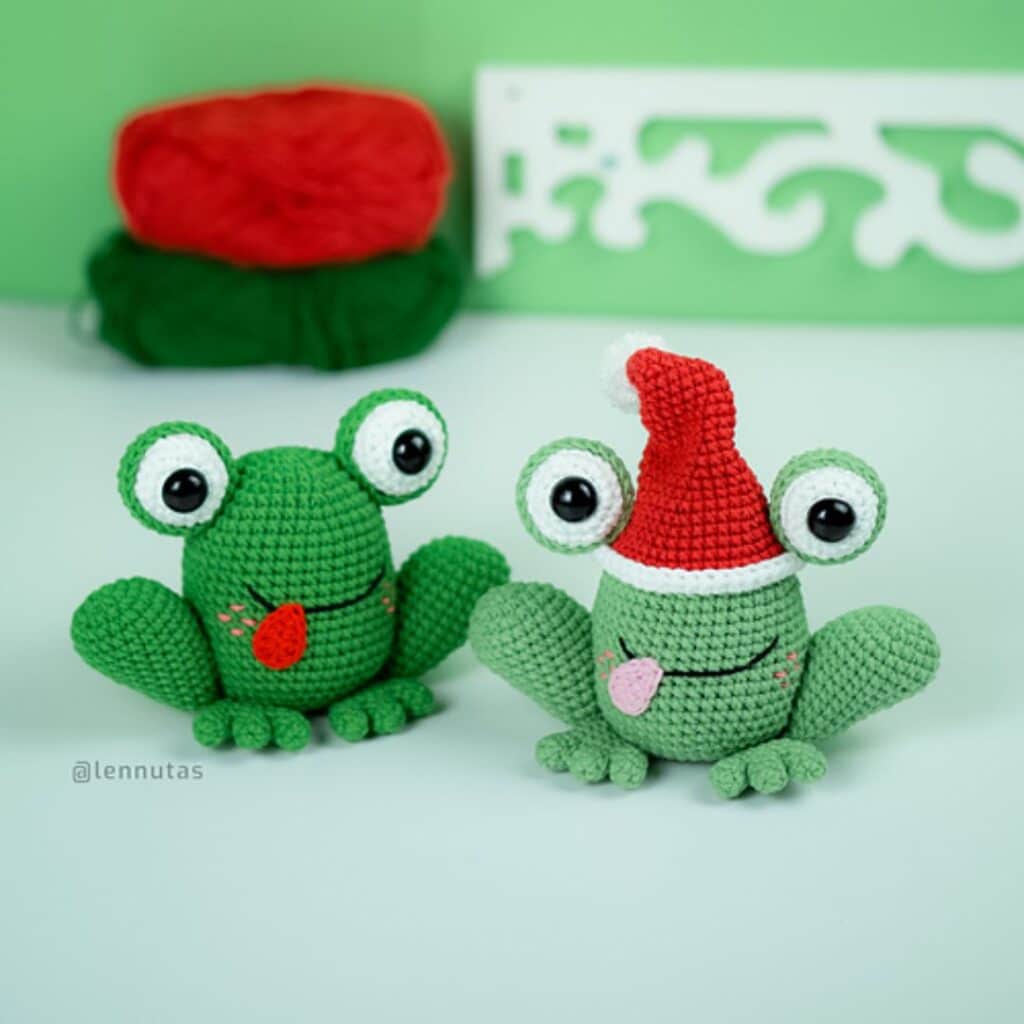
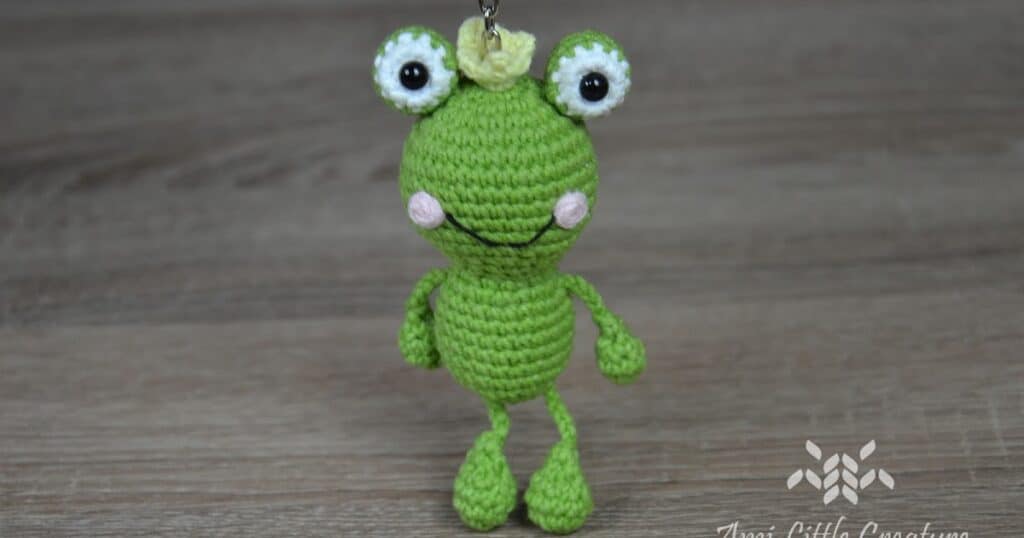
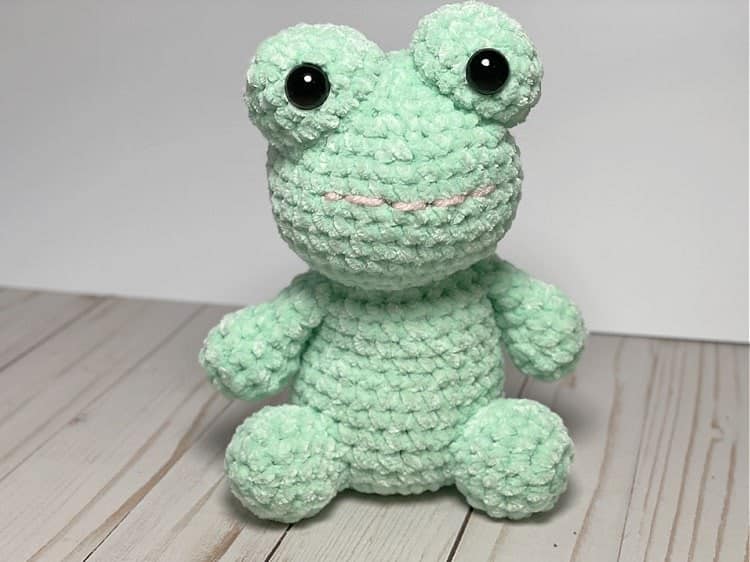
4. Practice Patience: It’s common to make mistakes when you’re learning, so be patient with yourself. If you need to, don’t hesitate to undo (or “frog”) your work and redo a section.
5. Use Online Resources: There are plenty of YouTube tutorials and crochet blogs that provide step-by-step instructions, and some even offer video tutorials for specific amigurumi patterns.
6. Ask for Help: Join a local crochet group or an online community where you can ask for help if you get stuck. The crochet community is generally very supportive and helpful. You can also message the designer of the crochet frog you are making!
Remember, the most important part is to have fun and enjoy the process of creating your handmade amigurumi frog!
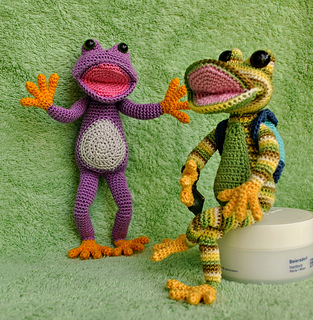

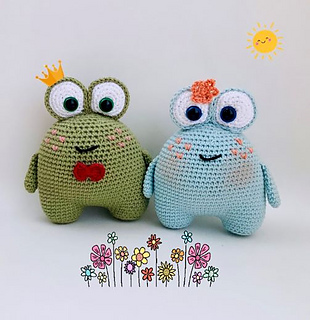
Basic crochet stitches needed for Crochet Frog patterns
When crocheting amigurumi frogs, or any amigurumi patterns in general, there are several basic stitches and techniques that you’ll typically need to know:
1. Slip Knot: This is the very first step in most crochet projects and it’s how you create the initial loop on your hook.
2. Chain Stitch (ch): The chain stitch is the foundation for all crochet projects. In amigurumi, it’s sometimes used to create a foundation chain or to create spaces between stitches.
3. Single Crochet Stitch (sc): This is the most basic and most commonly used stitch in amigurumi. It creates a tight, dense fabric that’s perfect for stuffed animals like frogs.
4. Increase (inc): An increase is simply two single crochet stitches in the same stitch. Increases help shape your amigurumi by making a round or row larger.
5. Decrease (dec): A decrease turns two stitches into one, helping to shape your amigurumi by making a round or row smaller. In amigurumi, it’s usually done as an “invisible decrease” for a smoother look.
6. Magic Ring or Magic Circle: This technique is often used to start amigurumi. It creates a tight circle with no hole in the middle, perfect for the top of the frog’s head or the bottom of the body.
7. Slip Stitch (sl st): The slip stitch is often used to join rounds together or to finish off (tie off or fasten off) your work.
8. Sewing or Joining: This isn’t a crochet stitch, but it’s an essential technique in amigurumi. You’ll often need to sew different parts together (like attaching the frog’s legs to its body).
These are the basic stitches and techniques needed to get started with crocheting amigurumi frogs. Once you’re comfortable with these, you can move on to more complex stitches and techniques. As always, the specific stitches you’ll need will depend on the pattern you’re following.
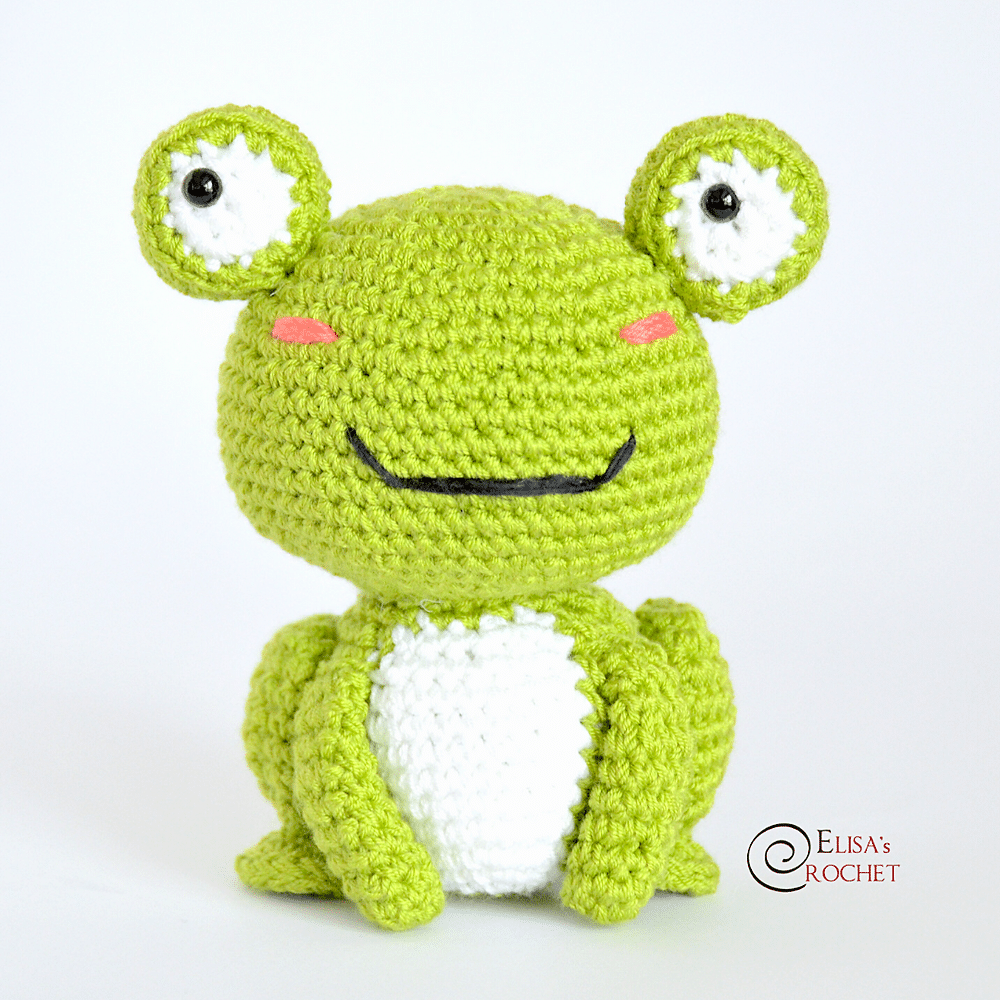
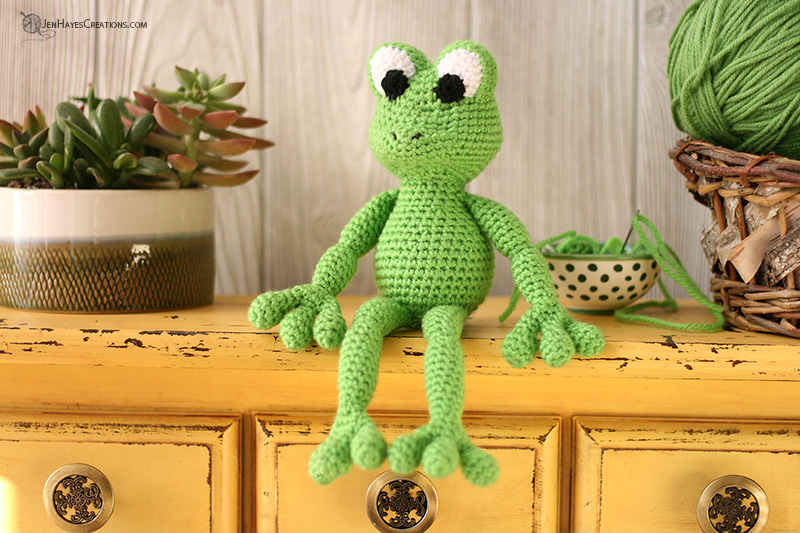

Best yarns to crochet frogs with
Choosing the best yarn for your crochet Frogs largely depend on your personal preference and the end purpose of the item you are creating. For crochet frog patterns, you might want to consider the following:
1. Acrylic Yarn: This is a popular choice due to its durability and ease of care. It’s also hypoallergenic and available in a wide variety of colors, including vibrant shades of green perfect for a frog. Some popular brands include Red Heart Super Saver and Lion Brand Vanna’s Choice.
2. Cotton Yarn: Cotton yarn holds its shape well and is ideal for a stiffer, more solid feel. It also tends to have a nice sheen, adding a unique touch to your frog. Lily Sugar’n Cream and Lion Brand 24/7 Cotton are both good choices.
3. Blend Yarns: Blends of cotton and acrylic can offer the benefits of both types – the sturdiness of cotton and the softness of acrylic. Examples include Lion Brand Comfy Cotton Blend and Bernat Maker Home Dec.
Best free crochet frogs
Materials needed for crochet frogs
Yarn - This ranges from Sport weight yarn to DK weight to Worsted weight and even Bulky yarns.
Hook - Use the crochet hook called for in the pattern. As a rule, always go down at least a size to what the yarn calls for.
Polyfill / Polyester fiberfill
Safety eyes or Black embroidery thread to replace safety eyes.
Remember not to use safety eyes when making amigurumi for kids younger than 3 years old.
Pocket Pal Frog Crochet Pattern
- The Pocket Pal Crochet Frog by Darling Maple Designs is a squishy project perfect gift for the little one in your life.
- An easy-to-follow pattern with lots of tips and videos to help you create a cute, quick, fun, pal to be loved for years to come.
- Pal crochet frog is made using worsted-weight yarn with the main color in about 100 yards and a small amount in assent colors.
- There is an option to skip the safety eyes especially when making this crochet frog pattern for a child less than 3 years.
- My rating - a 5 out of 5 stars - easy to follow, well written, and lots of help by the designer.
Striped Frog pattern
- A super easy crochet frog pattern. I love that Katerina Medvedik saved time with her technique of crocheting the body and the head in one piece!
- This was a great time saver for me as I love amigurumi with minimal sewing. The finished crochet frog is perfect also.
- You need less than 180 yards of yarn and a sport-weight yarn.
- The finished crochet frog is about 7" in height.
- I rate this pattern a 5 out of 5 stars.
Fred the Frog
- Little Fred, the crochet frog is such an adorable cutie that can not go unnoticed. A perfect project for beginners with an easy-to-read and follow pattern.
- The finished frog measures about 5.5 cm (2.2 inches)
- Yarn - You need a fingering-weight yarn and a 2 mm crochet hook to make this crochet frog.
Crochet Tree Frog
- How adorable is this small crochet tree frog?
- This is a quick project but it has got so many tiny parts which may make it cumbersome to make. Do not let this discourage you, the finished frog is so worth it!
- The finished measurement is about 12 cm (4 3/4"") long including the legs, the body is about 6 cm (2 1/3). This can however be adjusted by using a much thicker yarn weight.
- Yarn - You need about 55 yards of sport-weight yarn and some wire to give our little crochet frog some flexibility and stamina.
Frog prince pattern
- Prince Frog is a charming one with lots of characters. A royal to the chore but with some swags.
- The finished crochet frog measures approximately 15” tall and is made with about 100g of red heart yarn/Light worsted. You also need a pair of safety eyes and some stuffing.
- My rating is 5 out of 5 stars for this crochet frog as it works pretty fast and is easy to follow.
Crochet Frog keychain free pattern
- Not only is this a cuttie, but it is also made into a keychain!
- Also works up pretty quickly and will charm anyone with its cuteness.
- The finished crochet frog measures 10 cm!
Crochet Frog with a Swag
- What's not to love in this crochet frog? I love the details in it and it's just so adorable.
- You can make yours using any weight of yarn you are most comfortable with as the pattern calls for a 0.75mm hook.
- A little amount of stuffing and wire for stability is also required.
Felix the Frog | free amigurumi and crochet patterns
- Loving Felix the Frog as it is a straightforward crochet pattern with easy-to-follow instructions.
- The finished crochet frog measures about 25 cm / 10 in
- Yarn - Any DK-weight yarn
- Rating - Definitely 5 out of 5 stars as the finished piece is a direct replica of the original frog!
Free crochet frog pattern, free Amigurumi frog pattern
- Meet Felix the Frog an easy-to-follow crochet frog pattern with a fulfilling finished project. I love that the pattern is beginner friendly and it works up quickly.
- The finished frog measures 20.5cm / 8 inches when seated and 35.5cm / 14 when standing. inches.
- Yarn - You need a sport-weight yarn in about 420 yards, stuffing, and safety eyes.
- My rating - 5 out of 5 stars.
Jelly the Frog
- This Video shows step-by-step instructions to help you make your own crochet frog effortlessly.
- This super cute Jelly the Frog is a beginner-friendly project.
- You need about 110 yards of any sport-weight yarn for this project.
- The finished crochet frog measures about 10 cm
- I rate this a 5 out of 5 stars.
Frog Pattern
- For me, it is the disproportion of this cute frog. It makes it so realistic and I especially love the tiny long legs!
- Cute and easy-to-follow crochet frog pattern!
Green tree frog
- It's the attitude of this crochet frog for me! It cracks me up every time.
- Might be the wiggly eyes but I love the way it gives me side eyes!
- This was a fun project that will forever be cherished.
- Yarn - you need any DK weight yarn in two different colors.
- 5 out of 5 stars from me!
Crocheted Frog
- Most of the crochet frog patterns listed here are made with sport weight yarn with a few in DK weight. But this little guy is from a bulky-weight yarn.
- If you are looking for a quick crochet frog pattern, this is your go-to.
- The frog head and body are crocheted in one piece, starting at the bottom. The eyes, arms, and legs are made separately and sewn on. ou also need large safety eyes to make the eyes pop beautifully.
- Another 5 out of 5 stars from me.
Zachary the Crochet Frog
Meet Zachary the Frog, a fun little guy made from DK-weight yarn with a 3.5mm crochet hook.
I love the fun stripes added to make this crochet grog unique!
Baby Frog Free Crochet Pattern
- A cute project made using worsted-weight yarn with a beautiful patch in his Tommy.
- Did you spot the eyes? I love the proportion of the safety eyes and most importantly the placement of the eyes! Makes this crochet frog unique and beautiful.
Small Animal Collection: Crochet Frog Pattern
- Loving the attitude of this little crochet frog. He looks much ready for the next mischievous act!
- The finished crochet frog when made with worsted weight and a 3.5mm crochet hook is about 11 inches tall when standing and 6" when in the sitting position.
- My favorite part is the added patches on the back of this crochet frog. makes it so cute and realistic.
Crochet Tree frog free pattern
- Do you have some really big safety eyes, you will need those to make this really fun crochet frog pattern.
- What I love about the treefrog is that it comes out looking really cute, yet is one of the easiest patterns. I can do one in an evening!”
Frog Amigurumi wireframe doll pattern
- How about a crochet frog doll? One of the cutest of them all.
- This crochet Frog’s finished size is 15 cm.
- You need to add a wire skeleton. that passes through the arms, the legs, and the body of the Frog. It allows you to bend and straighten the arms and the legs to set the Frog in any position.
Mia the Frog - A Free Crochet Pattern
- It's time to meet Mia the Frog, she is a gentle and fun leaping friend who works up fast!
- Mia measures about 13 inches from eyes to feet. I love Mia's stripy dress and the cute blush on her cheek!
- Yarn - Any worsted weight yarn in about 200 yards.
- Mia is a 5 out of 5 as she will make any baby girl happy and a good friend.
Smile Frog pattern by Teresa Chao
- The duo of these crochet frogs will certainly bring a smile to your face.
- I love how quickly this pattern works up and is perfect with minimal sewing required.
- Available as a free download, so get your s and wip some cute crochet frogs today.
Leggy frog pattern
These cute crochet frogs are sure a happy set!
Will make a quick project for a last-minute gift idea.
Squishy and perfect stash-busting project, especially for the leftover yarns.
I can’t wait to see your beautiful makes! Come share your projects with me and the crochet community on Facebook and on Instagram.
Fosbas


